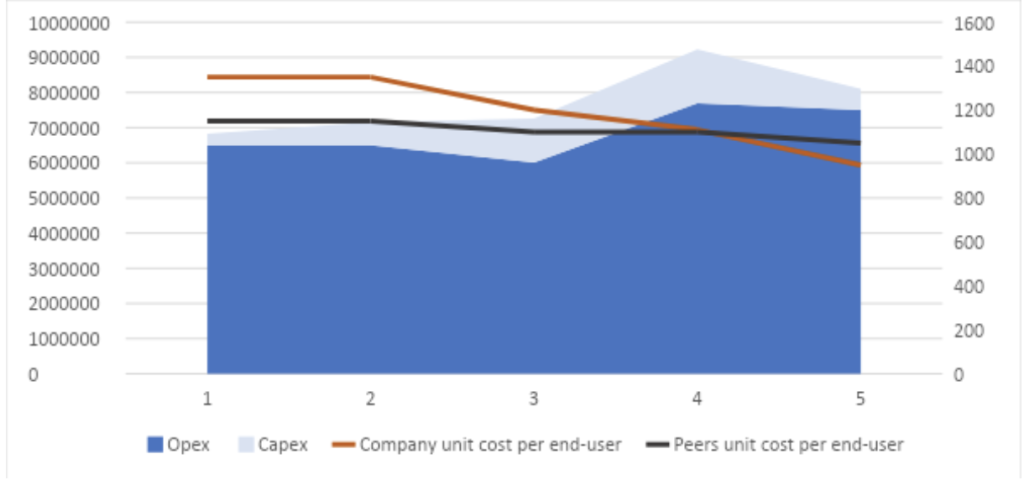Don't Make Costly Mistakes : make informed decisions based on Unit Cost ratios
Monitoring and Benchmarking cost unit ratios are essential components of cost management. By leveraging these tools, you can improve the efficiency and effectiveness of your IT department and continually identify opportunities for smarter spending.
Monitoring and benchmarking, a foundational component of cost management
While reviewing budgets and actuals can provide some insight into spending, it may not offer a complete understanding of your overall performance or the positive impact of your investments on the organization.
To gain deeper insights into your financial data, you need a well-structured reporting system that tracks the end-to-end cost of your services and aligns with market standards for benchmarking.

Benchmarking is a foundational component of cost management and mature IT financial management practices. Nevertheless, high-level benchmarking is not enough to fully understand cost optimization. To gain clear insights and a deeper understanding of costs, it is essential to monitor and benchmark Cost Unit ratios.
The Power of monitoring Unit Cost ratios
By tracking cost unit ratios, you can identify areas where costs are high and target specific initiatives to reduce them. This approach provides a more detailed and accurate picture of your organization’s cost structure and enables you to make more informed decisions about where to invest and where to cut costs.
Let me illustrate this with a personal experience. As a consultant, I was requested to analyse the performance of a team. I then decided to monitor the team Cost Unit per end-user.

The analysis revealed that the team was outperforming its industry peers and continuously improving. Despite an increase in total cost, the cost per end-user decreased significantly, from over $1300 to close to $1000, which was below the market benchmark of $1100. This was due to smart investments in CAPEX and strong processes. The increase in total cost was not related to the team’s performance or their investments but caused by external factors like a rise in the number of users.
Let me share a second personal experience. I was asked to assess the maintenance provided by our main application provider. To get a clear idea of their performance and improvement over time, I decided to monitor the trend of the Total Cost of Ownership (TCO*). This provider was responsible for maintaining many applications for our company, but we found that their concentration was not delivering the expected value. Instead, we concluded that working with smaller providers focused on TCO would be more effective. We also developed a plan to retire the application with the highest TCO.
(*) TCO is a financial estimate of the total direct and indirect costs of a product, service, or system over its lifetime. In the context of IT, TCO includes not just the purchase price of hardware and software, but also ongoing maintenance and support costs, training, upgrades, downtime, and any other expenses associated with the technology.
Prioritize measuring and monitoring Unit Cost ratios
These examples highlight the importance of tracking key Unit Cost ratios and benchmarking. By monitoring TCO, we were able to make informed decisions and identify areas where we could optimize costs. CIOs and IT costing experts should prioritize measuring and monitoring unit cost ratios to improve cost management and achieve sustainable cost savings.










